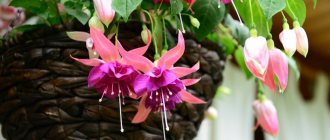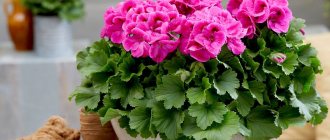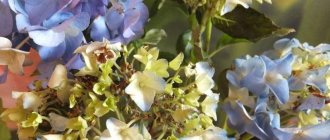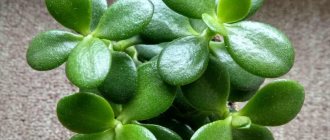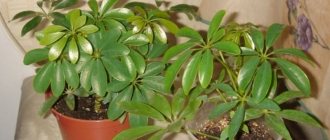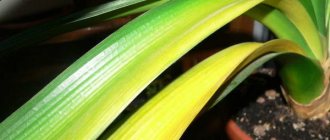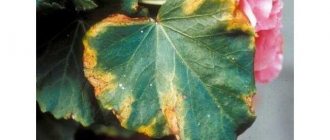Indoor fuchsia - description and origin
This very beautiful, brightly flowering indoor plant belongs to the fireweed family. Its wild ancestors and relatives grow in the mountain forests of South and Central America, New Zealand, Tahiti and the Falkland Islands. It began to conquer Europe in the 17th century, when the French botanist Charles Plumiere developed a spectacular garden crop from a wild weed plant.
Fuchsia in home growing conditions is a low evergreen shrub that grows up to 80 centimeters. It cannot be confused with any other indoor plant, its flowers are so unusual. Because of their shape, they are often compared to Chinese lanterns. Delicate sepals and petals are painted in bright colors, and the flower itself surprises with its unreal beauty, as if it were not a creation of nature, but a fantastic idea of a needlewoman.
Modern indoor fuchsia has hanging, bush or standard varieties. Its leaves are most often opposite, less often whorled, and even less often alternate. They have a lanceolate or ovoid shape, the edges are serrated, crenate, or solid.
Gracefully shaped flowers hang down on thin, rather long stalks. The calyx of the flower is tubular, above which four lobes are located horizontally or bent upward. Often the calyx and lobes differ in color. The stamens and pistil, thin and long, protruding significantly outward, are the finishing touch.
Ambient temperature requirements
Fuchsias respond painfully to heat. In summer weather, the leaves become limp and flabby. For healthy flowering you need a temperature in the range from +18 °C to +25 °C. It is difficult to create optimal conditions in an apartment in the summer. Therefore, the plant is placed on a loggia, terrace, in the shade, where the burning rays of the sun will not reach it and the leaves will not begin to curl.
The plant will respond with gratitude for good care.
Sometimes fuchsia is planted in open soil outside. But if the air heats up to 30 °C, the plant will instantly shed its leaves and begin to ache and dry out.
A ceramic or porcelain pot will help protect the roots from overheating. A plastic container for flowers heats up, while a ceramic one keeps it cool.
Important ! In the summer heat, the fuchsia root system will be perfectly preserved in a spacious ceramic pot. It remains cool in the heat and protects the plant roots from excessive overheating.
Types and varieties of fuchsia photo
When growing fuchsias at home, about 2000 hybrid varieties are usually used, including upright shrubs, subshrubs, ampelous, dwarf and standard plants. It is in hybrids that the corolla and calyx have the greatest number of color combinations, as well as a variety of types of flowers - double, semi-double or simple, large or small.
Large-flowered hybrid varieties of indoor fuchsias are often united by a common name for them - beautiful or beautiful fuchsia, this is the result of crossing brilliant and sparkling fuchsia.
Among the small-flowered fuchsias, the following groups are most often found:
- F. trifolia is a hybrid that is a low, well-branched bush. The ovoid oblong leaves are very decorative in color: they have a reddish tint on top and brownish-red below. the flowers are long and narrow, bell-shaped, most often painted in bright red and orange tones. This species blooms from May to October. Looks good in hanging pots.
- F. magellanica, suitable for large rooms, as well as for open ground, since it can reach 3 meters in height. The leaves are small, the flowers are axillary. Tolerates frost if pruned and securely covered.
- F. recumbent is the ancestor of hanging hybrids and varieties. Small flowers, unlike many of its relatives, are directed upwards. It can also be grown in standard form, but is more often used for grafting onto standard forms.
- F. brilliant (sparkling) is an evergreen bush, the branches become woody, and in the lower part they often acquire a reddish-brown tint. Blooms profusely from June to October, the fruits are edible.
- F. graceful, with shoots looking down. The flowers seem to float on thread-like, very thin stalks. Their corolla is usually red-violet, the calyx is colored red or pink, and the pistil and stamens are bright red.
- F. boliviana is distinguished by abundant early flowering - from March or April. Inflorescences reach a length of 30 centimeters. She needs warm rooms.
f. triphylla (f. tryohlistnaya)
f. magellanica
f. fulgens (f. brilliantashhaya)
f. boliviana
It is simply impossible to list the hybrid varieties of fuchsias intended for indoor growing - there are more than two thousand of them, each more beautiful and elegant than the other.
The most common varieties of hybrid fuchsia:
- 'Alfred de Groot', erect, pink-purple petals-petals and soft pink sepals;
- “Annabel” - bushy and ampelous, its flowers are large, double, with a white “skirt” and sepals, colored from white to soft pink;
- “Ballerina” is an erect plant, with scarlet sepals and a lush white or pale pink “skirt”;
- “Cecile” is an erect bush, with densely double flowers, soft red sepals, in a bluish-lilac “skirt” with a wavy edge;
- “Marinka” is an ampelous fuchsia, its bright red flowers are simple, but always in huge quantities;
- “Prince of Peace is an ampelous variety with simple flowers, very decoratively colored - a bright red or purple corolla-skirt with white sepals;
- “Santa Clara” is also an ampelous variety, large, double flowers, a cherry-colored “skirt” with white transitions and white sepals;
- “Voodoo” is erect, the flowers are large, densely double, the “skirt” has a dark blue-violet color, and the sepals are bright red.
Rules for caring for home fuchsia
Accept that even a novice gardener can grow fuchsia at home. This is true, since the rules are simple, and the plant itself amazes with its vitality.
f. microphylla (f. melkolistnaya)
Location and lighting
Heat-loving fuchsia is predisposed to good lighting. Therefore, a place for it should be chosen on window sills positioned on the sunny side - western and eastern. Windows facing south are also suitable, but it would be better to place the plant not on the windowsill, but on a stand next to the window.
In any case, in the summer, fuchsias need to be shaded a little, since this is a forest plant, and direct sunlight is harmful to it. For shading, it will be enough to cover the glass with ordinary plastic film - to create the effect of frosted glass.
Important! You need to prepare the shading in advance, since during flowering the fuchsia cannot be moved or rotated. Otherwise, it will drop all the flowers and buds.
If fuchsia lacks light, its shoots will become excessively elongated, which will negatively affect both the condition of the plant and its appearance.
Air temperature and humidity
During the period of active growth and flowering, fuchsia needs warmth. It will be satisfied with a temperature of up to a maximum of 26˚C; it is undesirable to allow it to exceed this figure, as it may begin to wither and drop flowers. In winter, temperatures from 16 to 20˚C are suitable for fuchsia. Sometimes she is even moved to rooms with a temperature of 10-12˚C so that she can rest well.
Important! At any time of the year, fuchsia should be protected from drafts.
The acceptable level of air humidity for fuchsia is from 40 to 60%. And if exceeding the desired level for some time is acceptable, then too dry air will cause the leaves to wilt and the stalks to dry out. Therefore, in hot weather, fuchsia should be sprayed with soft water at least 2 times a day, or even better, place a wide-necked container of water next to it.
In winter, high humidity of fuchsia is necessary and even harmful, so no additional measures need to be taken to moisturize the plant.
Watering rules
Watering during the active growth of fuchsia and its flowering should be plentiful. It is carried out as the top layer of soil dries. To avoid problems with roots, excess water should be drained immediately. During the dormant period (winter), fuchsia is watered less frequently - once every 5-6 days. In October-November you can water less often.
Important! To water fuchsia, soft, well-settled water is required, since it does not tolerate acidification or, conversely, salinity of the soil.
Substrate for fuchsia and its feeding
The substrate usually contains peat, well-rotted mullein, leaf soil, as well as alumina and sand. All components are taken in equal parts. You can purchase ready-made soil, sold in flower shops.
Important! Any substrate is depleted approximately one and a half to two months after planting.
Fuchsias begin to be fertilized from the moment the first buds appear. Mineral fertilizers are applied once a week, in liquid form. Moreover, they should not contain nitrogen; in extreme cases, the amount should be minimal. Fertilizers should be applied to moist soil. As winter approaches, fertilizing is reduced and then stopped until spring.
Important! When feeding fuchsia with organic matter, its concentration should be two times less than recommended according to the instructions. Otherwise, the fuchsia will not bloom.
Fuchsia should be fed with organic matter no more than once a month.
f. coccinea (f. yarko-krasnaya)
Why does a plant shed leaves and flowers - the main reasons
Why does the plant disappear? In general, caring for begonia is not difficult, but any mistake can lead to plant disease, dropping leaves and buds. To avoid this, you must carefully monitor the condition of the flower and follow the following recommendations:
- Inadequacy of plant conditions is one of the most common causes of bud drop.
In nature, begonia lives in the subtropics and tropical rainforests, but home air is too dry. To prevent begonia from getting sick, the plant should be properly moistened:- It is unacceptable for water to get on the leaves, the growing point, and especially on the flowers.
Air humidification is possible by spraying water near the flower.
- Water should not be allowed to stagnate in the pan, as this can lead to rotting of the roots.
- Begonia should be watered frequently, pouring water along the edge of the pot.
- Regarding lighting and heat, direct rays of the sun are contraindicated for the plant.
They can cause burns on the foliage.- South-Eastern and South-Western window sills are the best place for a flower, however, it is recommended to darken them in hot weather.
The air temperature in which begonia will feel comfortable is 20-22°C in summer, 16-18°C in winter. If the flowers dry out, the leaves wither, and the color changes to red - all these are signs that the plant is hot.
- From time to time, begonia may lack nutrients.
- If the leaves of the plant change their color to a lighter color and the buds fall off, this is a sign of soil depletion. It is necessary to apply complex mineral fertilizers. During the flowering period - once every two weeks, in winter - once every one to two months.
- Mineral mixtures should be alternated with organic ones.
- To ensure abundant flowering, avoid nitrogen fertilizers, as they promote foliage growth and inhibit the formation of buds. During flowering, begonias need trace elements, potassium, and phosphorus. Read about how to achieve beautiful buds and why it doesn’t bloom in this article.
- Another reason for the fall of buds and flowers is various rotten processes and fungal diseases.
Most often this happens as a result of high humidity and temperature changes. Sometimes fungal spores are carried by harmful insects. Gray rot and powdery mildew are the most common diseases of begonias that lead to the dropping of flowers.Rot appears as light watery spots on buds, leaves and shoot tips. Against the background of a general weakening of the plant, the buds begin to fall off first, at the points of attachment to the branch.
If only the inflorescences break off, but the pedicels remain, then most likely the cause is powdery mildew. Urgent treatment of begonia with appropriate solutions is necessary.
Treatment solutions:
- A copper-containing fungicide (Bordeaux mixture) or solution that can be prepared at home. It contains: copper sulfate (2 grams) and laundry soap (20 grams), dissolved in one liter of water.
If the disease progresses and the condition of the plant worsens, treatment should be carried out with a 1% solution of Fundazol.
- Spider mites and aphids are also possible reasons why the plant drops its buds. Pests parasitize the leaves, sucking the juices from them. This leads to weakening of the begonia. With regular care, the appearance of insects can be immediately noticed and removed manually to avoid complications. Otherwise, you will have to resort to treatment with special solutions.
You can read more about plant diseases, as well as about pests that destroy begonia, in this article, and you will learn about why begonia buds and leaves fall off here.
Fuchsia transplant
Typically, fuchsia is replanted once a year, in March, before the first buds appear. It is best to choose a container with thick walls for it, for example, ceramic. The pot is taken two to three centimeters in diameter larger than the previous one, but no more. A pot that is too large will cause the plant to grow root and green mass, but it will bloom less well.
Important! It is imperative to place drainage at the bottom of the fuchsia container so that the roots do not absorb too much water.
A small amount of fresh soil mixture is poured onto the drainage, the plant is transferred from the old pot to the new one along with a lump of soil. The remaining free space is also filled with fresh soil mixture.
Before transplanting, all fuchsia shoots must be shortened by a third. During transplantation, it is necessary to carefully examine the roots and remove any damaged, diseased or showing signs of rot. Healthy plant roots are white.
Creating optimal conditions for pest control
A known disease of houseplants can be leaf rust, where we see concentric circles in the lower levels of the leaves. Diseased leaves must be removed, as this is an infectious disease that can be transmitted through the hands of humans, pets, and gardening tools.
After the leaves have been removed, the healthy part of the fuchsia is treated with special garden preparations such as “Topaz”, “Strobe” or Bordeaux mixture, cuproxate. Treatment is carried out in 2-3 doses with breaks of 10 days.
When the fuchsia begins to wilt or the roots become white and too short, this indicates the need to replant it in a larger pot. The roots should be white, but if they are completely brown, then they are affected by root rot from excessive watering.
Trimming and pinching
The optimal number of fuchsia prunings is two per year. The first pruning is done when the plant has finished flowering. At this time, all flower stalks, seed pods, as well as axillary branches that have bloomed and are located at a distance of several centimeters from the dormant buds are removed. Shrunken and broken shoots are also pruned.
The second pruning is winter, it is done when the fuchsia is dormant. This pruning forms the crown of the plant and is also intended to remove excess shoots. Fuchsias are often grown using the bonsai technique; to do this, during winter pruning, you need to leave one or several vertical shoots, which are usually twisted - they will be the trunk.
Forming a fuchsia crown is done not only by pruning shoots. An important role is played by pinching young shoots throughout the entire period of plant growth, but the main emphasis is placed on this in the spring.
Waking up after a winter rest, fuchsia begins to actively grow, sending out shoots from each bud. Those that are too elongated need to be pinched so that the fuchsia crown is neat and “combed.”
Important! You should not get carried away with pinching fuchsias: buds form mainly on young shoots, or rather, on their tops.
Usually the ends of the shoots are pinched above the two lower pairs of leaves. When new shoots develop from their axils, pinching is done over the 3rd or 4th pair. Usually this is enough to make the bush neat and produce abundant flowering.
Sometimes fuchsia is grown in standard form. For this purpose, the strongest cutting with a well-developed root system is selected. In this case, pruning is carried out according to the following rules: side shoots are removed so that the plant grows straight upward. When it has grown to the desired size, the crown is trimmed to allow side branches to grow. As a rule, within three years, rarely more, a beautiful tree strewn with flowers is formed.
Using pruning, you can postpone the flowering time of fuchsia, for example, make fuchsia bloom in winter. This is achieved by summer pruning of the plant. Fuchsia should be kept in a dark and cool room until the beginning of summer, and then regularly pruned every three months so as to prevent it from forming buds. It will need to be left alone in the fall and will bloom vigorously.
Important! Winter flowering of fuchsia requires watering and fertilizing in the summer.
Rules of care during the flowering period
After wintering, the plant needs help for healthy flowering. Dried leaves are trimmed and dead flowers are removed. Branches that have grown inside are taken out and removed.
During the flowering period, growth retardation and absence of flowers are often observed. This occurs due to poor soil and insufficient nutrients. The plant requires potassium and phosphorus, so it needs to be fed.
Fuchsia has an actively developing root system. The pot should be spacious.
Care for fuchsia in winter
Winter for fuchsia is a period of rest. The best temperature for the plant at this time is 16-20 C; the humidity that is available in the room where it is located will be sufficient. It is not recommended to spray fuchsia during this period. You also need to reduce watering, and after flowering has finished, do not water it at all for several weeks.
f. paniculata (f. metelchataya)
In winter, fertilizers are not applied, and it is not recommended to replant the plant. But these days are the most suitable for formative pruning of bushes, which is usually carried out in January.
Important! Warm wintering (in a room familiar to fuchsia) sometimes causes the plant to shed its leaves and shoots may stretch out.
If possible, for the winter fuchsia is moved to a room with a temperature of 8-10˚C. This is done after autumn pruning, and in this case you also need to trim the leaves. If you place the plant in an even colder room - 3-5˚C, it will go dormant during the winter, and its growth will stop for the entire period of being in the cold. A pleasant feature of fuchsia is that during the dormant period it is completely indifferent to the level of lighting, so it can winter in dark rooms.
Rust lesions
Another disease that quite often affects fuchsia is rust in the form of brown spots on the leaves of the plant. It should be noted that the disease is highly contagious. Therefore, treatment must be started immediately. To do this, it is necessary to completely remove all infected leaves, and wash the flower thoroughly with warm running water and laundry soap. At the next stage, fuchsia needs to be treated with a special anti-rust agent.
Rust on fuchsia
Fuchsia propagation
Fuchsia can be propagated in one of three ways: collecting and planting seeds, cuttings, and growing seedlings from leaves.
Seeds as a way to propagate fuchsia
This option may be interesting for those who want to have new interesting flower colors. To get full-fledged seeds, you need to carry out artificial pollination yourself. The staminate anthers of the mother flower must be removed. The pollen in the stigma of the pistil is brought from the parent plant.
After pollination, the mother flower needs to be “packed” - put a cover made of light fabric on it and carefully attach it to the branch with a thread. When the seed capsule is ripe, it is very carefully removed with tweezers, cut and the seeds are removed.
Important! The probability of preserving varietal characteristics when growing fuchsias from seeds is zero. This method is good for obtaining new varieties.
The seeds need to be dried for several days, and then they are sown on moist soil. The best time for sowing fuchsia seeds is February. The container with the planted seeds is placed in a well-lit place. The plantings are ventilated daily for 15 minutes.
The seedlings appear after a few weeks; they will now require daily spraying and longer ventilation so that they can adapt to normal indoor conditions. One and a half to two month old seedlings need to be pruned to give them more space.
After another two months, the picked seedlings are planted in separate pots and placed in a permanent place that fully corresponds to the conditions for growing fuchsia.
Propagation by cuttings
This is one of the best ways to propagate fuchsia, especially for those who are doing this for the first time. Typically, cuttings are taken at the end of the dormant period - February or early March. The stalk must be at least 12 centimeters long, with several leaves. The lower ones are removed, the upper ones are shortened by about half.
Important! The cuttings should be lignified, with healthy buds.
The cutting is placed in a container with water, which must be settled, soft, preferably boiled, and covered with a plastic bag or a transparent container of suitable size. It is advisable to dissolve an activated carbon tablet in water; it will prevent possible rotting.
This method is great for ordinary and ampelous varieties. Its advantage is that you can monitor the condition of the roots, which is useful for beginner lovers of beautiful flowers.
Important! The air temperature during rooting should be maintained at 20˚C, and the container with cuttings should be in a well-lit place. The cuttings need to be sprayed daily and the water changed every two days.
Roots on cuttings usually appear within 5-10 days, after which they need to be planted in individual pots in prepared soil. For young seedlings, small containers with a diameter of up to 7 centimeters are suitable.
Cuttings can also be rooted in sand or other loose soil. The cuttings are buried so that the lower nodules are not
touched the ground. In this case, the roots will appear in three or four weeks, after which they can be planted in separate pots.
Cuttings of slow-growing varieties can be taken at the end of summer. In this case, by spring the cuttings will have grown so much that they can be transplanted into pots.
It is also permissible to cut fuchsia in winter, when its crown is cut off to form it. Suitable ones are selected from the cut branches; in this case, rooting is best done in the sand.
Important! In the last two cases, the seedlings need to be provided with additional lighting, and their temperature and humidity must be maintained according to the “summer” regulations.
Propagation of fuchsia by leaf
Sometimes it happens that propagation by cuttings is impossible for some reason. In this case, you can use its leaves. To do this, large healthy leaves with petioles and part of the shoot with a bud are cut off. They are buried a centimeter into the ground and covered with a transparent lid. This will ensure increased humidity and constant temperature for the leaves. During the period of growing fuchsia bushes from them, the leaves need to be sprayed daily.
Young fuchsia rosettes appear in 2-3 weeks. From now on, you only need to cover the sprouts at night. When they grow and become stronger, they are carefully separated from the leaf and planted in separate pots. Further care for them is similar to care for rooted cuttings.
We take proper care
Let us once again recall the fact that diseases and pests appear in fuchsia due to improper care.
Fuchsia has a large number of species. Its flowers have a different color palette. Therefore, on the windowsill you can collect all the colors of the rainbow.
- Watering. During the warm period, the flower needs frequent and abundant watering. As soon as you see the top layer of soil drying out, feel free to grab the watering can. In cold weather, watering is significantly reduced. In the last 2 months of autumn, watering can be stopped altogether. When the room temperature is low enough, watering is carried out a couple of times a month.
The water used is settled and cannot be watered from the tap.
- Light. All types of fuchsias love bright lighting. It must be diffuse. The scorching sun has an unfavorable effect on the flower. During flowering, the fuchsia should not be twisted or rearranged, otherwise the entire color will fall off.
- Temperature. During the growing season, the optimal temperature is 18-25 degrees. In summer, the flower can be planted in open ground. Temperatures above 30 degrees are fraught with the following consequences:
- Leaves are falling.
- Flowering stops.
- The flower dries up.
On hot days, fuchsia is removed from sunny windowsills; it is advisable to take it out onto the balcony or loggia. Direct rays of the sun will destroy the flower.
The heat is also harmful to the root system, so it is recommended to use ceramic pots for planting; they are not subject to strong heat.
- We fertilize and feed. Fuchsia during its growth period needs regular spraying of its leaves. It is better to do this in the mornings and evenings. To humidify the air, place a container with pebbles (pebbles) filled with water near the flower pot. In cold weather, moisture will cause harm; stop spraying.
As fertilizing, you can use any purchased products that are intended for indoor plants.
In winter, fertilizer is not needed; they begin to add it at the end of March. Frequency – once every 7 days, before the onset of cold weather.
- Transfer. This point is very important, since when using low-quality soil, various diseases can develop and pests (for example, aphids) can appear.
The flower should be replanted annually in the spring. The soil is purchased at a flower shop. Be sure to place drainage at the bottom of the pot so that there is no excess moisture. Choose a large pot.
- Reproduction. It is also a very important factor; during this period the flower needs special care, since it is during reproduction that it is considered the most vulnerable and weakest.
Fuchsia can be propagated in 3 ways:
We propagate by cuttings. I start the process at the end of winter, beginning of March. Those varieties that grow slowly can be propagated at the end of August, beginning of September. Cuttings are selected 5-7 centimeters long. Rooting goes well in a loose environment. It can be either sand or water. In less than a month (20-25 days) you will see the first roots. At this point, the cuttings can be planted in pots 7-9 centimeters deep. You can prepare the soil yourself; it should contain:
- Humus.
- Sand.
- Leaf or turf soil.
All ingredients are mixed in equal quantities.
For the splendor of the flower, several cuttings are planted in one pot. Their flowering can be expected in the same year.
We propagate by seeds. To plant seeds, artificial pollination is required. This is a very interesting process. You can mix several types of fuchsias. As a result, new varieties will appear and the color palette will expand its horizons.
We propagate by leaves. This type of reproduction should be carried out according to a clear pattern:
- I choose a strong stem. It should have strong and developed leaves.
- The resulting “material” is placed in loose soil to a depth of no more than 1 centimeter.
- The planted leaves are covered (plastic or glass lids can be used).
- Spraying is carried out daily.
- You cannot take water from the tap; it must be boiled and warm. Be careful not to burn the plant!
- The appearance of the first small rosettes indicates the need for repotting.
By propagating fuchsia you can get different and magnificent varieties and species. It is better to do this yourself, then you will be confident that the plant will grow strong and healthy. Brought seeds, sprouts, leaves from the “street” may have various problems that will have to be dealt with. In the worst case scenario, they will infect other indoor plants.
Pests and diseases of fuchsia, treatment
Fuchsia pests and methods of controlling them
Fuchsia itself is quite resistant to pests. But this is not a reason to relax: even the most resistant plants are sometimes attacked by pests, even indoors. Enemy number one is the whitefly, a type of moth, an insect up to 2 mm in size with white wings. Her favorite environment is a combination of high temperature and high humidity. She lays eggs on the lower part of the leaves, the larvae developing from them suck the juices of the plant, secreting a sticky sugary secretion. In addition to the harm from sucking the juices out of the fuchsia, sooty fungus often settles in these secretions.
To get rid of whiteflies, you have to use chemicals - Actellik, Aktara and others, but in enclosed spaces it is better to use other options. Washing the leaves with a soapy solution and then rinsing with clean water is often used.
This “bath” procedure must be repeated several times. Treating affected plants with a decoction of dandelion roots and leaves or garlic infusion gives good results. To make the effect of these infusions last longer, a soap solution is added to them.
Important! Regular warm showers for the entire plant will help prevent insect attacks.
In hot, dry weather, fuchsia is threatened by spider mites. In this case, the plants begin to lag in growth, their apical parts dry out. The mite also settles on the lower part of the leaves, entwining them with a thin web.
To combat it, use Fitoverm, Akarin, etc. Among the folk remedies, wiping the leaves with medical alcohol, spraying with a soap solution or infusion of garlic or a decoction of onion peels are effective.
Important! Excessively damaged leaves and shoots should be removed.
Fuchsias can also be attacked by aphids and thrips. In any case, when indoor plants are damaged by insects, the best helpers are good old garlic and onions - they can help in the fight against almost all pests.
Fuchsia diseases and their treatment
With proper care, fuchsias are almost never affected by diseases. However, systematic violation of the watering regime, temperature or humidity can cause flower disease.
The best indicator of the health of a fuchsia is its roots. If they are firm and white, the plant is healthy. Soft and brown - a manifestation of root rot, the result of excessive watering. In this case, the roots should be thoroughly and carefully washed in warm water, all rotten parts should be removed and the fuchsia should be moved from the pot with soil to a container with water for a while. When new white roots begin to grow, it can be planted again in fresh soil.
Often root diseases are associated with overheating. This process is easy to prevent. Firstly, it is best to grow fuchsias in ceramic pots - they do not overheat. If a plastic container is used, it should be white.
If there is no white (light) pot, you can protect the roots from overheating by wrapping the dark pot in thick white paper or foil. Secondly, in the summer, you need to put a screen in front of the fuchsia pots, which will protect the pots, and, consequently, the roots, from excess heat.
Important! In summer, fuchsia is watered either early in the morning or in the evening. Watering during the daytime can not only cause leaf burns, but also overheating of the roots.
Often the cause of the disease is a lack of microelements in the soil mixture. Brown spots on the leaves that dry out over time are a sign of molybdenum deficiency. Distinct yellow veins - fuchsia lacks manganese. Yellow leaves with green veins – low iron. In this case, it is necessary to introduce the missing elements into the fertilizing in the form of chelates.
Important! In the summer, fuchsia is often affected by other diseases that are carried through the air by spores.
Rust appears as dark brown spots on the leaves. If its signs are detected, fuchsia must be immediately isolated from all other plants, and all affected leaves and flower parts must be completely removed. The next stage is to thoroughly wash the entire bush with a warm solution of laundry or green soap. Only after these procedures should fuchsia be sprayed with medicinal preparations.
Important! All tools that were used to remove damaged parts of the plant, as well as the place where it stood, must be disinfected.
Also, violation of the rules of care can lead to the appearance of powdery mildew on the plant: poor drainage or excessive watering. In this case, it is necessary to treat fuchsia by spraying it with foundationazole (1 gram dissolves in a liter of water) or other fungicides.
Aphids on fuchsia: how to get rid of them
Identifying pests is usually not difficult if you monitor your “green pet” regularly. Pests often grow on weak plants that are already affected by some diseases or pests. Pests often move to fuchsias from neighboring plants, as is often the case with aphids, which are very often found on indoor plants.
It is easier to identify pests than any diseases, since caterpillars or other insects can always be seen even with the naked eye. However, questions may arise with identifying pests that grow in the roots.
We suggest you familiarize yourself with How to hang a picture on a wall without drilling - 3 steps |
It is extremely difficult to remove this very common pest from fuchsia. This is due to the fact that this insect still returns, and one treatment is usually not enough.
Aphids most often infect the entire plant rather than just any part of it. Fuchsia leaves may curl and fall off, and they often turn yellow quickly. You may notice sticky, sticky secretions left by insects on the plant. These green insects are easy to spot, even though they are small. If measures are not taken in a timely manner, the fuchsia will die.
It is useless to catch aphids by hand; only complete treatment of the plant using a special product can help.
Whitefly
Another fuchsia lover that is difficult to remove is the whitefly. Whiteflies are very small, white, winged insects that quickly attack fuchsia.
You can fight whiteflies using professional insecticides or folk remedies. Whiteflies often appear on fuchsias in the warm season, when they can freely fly into the house through windows. Whiteflies may cause fuchsia leaves to begin to fall off, and droplets of a characteristic white color may form on them.
If white midges appear on fuchsia, you need to act immediately. The first aid may be to treat the leaves with a soap solution made from laundry soap.
Nematodes
Nematodes are quite dangerous worms that can infect the entire root system of a plant in a short time. Nematodes often attack the roots of fuchsia. You can see characteristic brown-brown spots on the leaves. When affected by nematodes, the leaves begin to fall off, and the plant itself gradually withers. It is often almost impossible to determine it by external signs in the first stages of the disease.
If the root system is damaged by such worms, the plant can only be helped by treatment and immediate replanting.
Spider mite
If cobwebs, black dots and a gray coating appear on the fuchsia foliage, then most likely the plant has been infected by a spider mite. This parasite often causes plant leaves to curl, but curing them is not difficult.
Caterpillars
In most cases, caterpillars are very easy to deal with. They are usually collected by hand, after which the plant is treated with a soap solution or a special insecticide.
Sometimes aphids attack fuchsia bushes. The way to combat this small fly is to wipe the plant with a cotton swab dipped in medical alcohol, and then treat it with special insecticides. One of these drugs is Akellic. One ampoule of the product must be diluted in a liter of clean water. In order to completely remove aphids, the treatment procedure is carried out every three days.
Aphids on fuchsia
Possible problems with growing fuchsias
Problems with fuchsia most often arise due to violations of the rules for its maintenance.
1. If leaves, buds and flowers begin to fall:
- the temperature is too high for the plant - lower the temperature by 2-3 degrees;
- low air humidity - you need to spray more often;
- the watering regime is disrupted - normally, fuchsia is watered once every 2-3 days, provided the soil is constantly moist;
- the plant is in a draft - protect it at least with a light screen;
- the pot with fuchsia has been rearranged or turned - fuchsia really doesn’t like this, you’ll just have to wait until it gets used to it.
2. Leaves turn yellow or brown: waterlogged soil, especially in winter. To bring fuchsia into order, it is enough to reduce watering.
3. Leaves turn yellow and fall off: attack by pests, most likely whiteflies. It is urgent to take measures to eliminate pests.
How to prevent the problem from recurring
To avoid a reoccurrence of the flood, you need to:
- probe the soil all the time and water only when it begins to dry out;
- water the plant early in the morning, especially in the heat;
- Withered, drooping plants should not be watered under any circumstances, but should be given rain and shade;
- Do not fertilize in hot weather.
As with any business, problems are inevitable in the process of growing fuchsia. But the experience of overcoming them leads to a better result. A lovely fuchsia will definitely decorate your home or cottage.
Why doesn't fuchsia bloom?
What to do in such cases? Where to look for the reason? The reason most often lies in improper care. It may be excess moisture that causes the roots to rot. In this case, you need to adjust the watering. Fuchsia will not produce flowers even if it does not have enough light. Since it is sensitive to rearrangements, you must initially take care of sufficient lighting. If the flower is located near the north window, the only way to help is with additional light sources.
If a plant lacks trace elements, it will also respond by not flowering. But it is also necessary to remember that excess nitrogen also leads to this. Therefore, fertilizing must be strictly balanced. In winter, the suitable temperature for fuchsia was not provided - it was too hot. In this case, you can help by carefully moving it to a room with a lower temperature for several days.
A pot that is too large is a common reason for lack of flowers. When there is excess space at the roots, they grow first, then the leaves. This is where all the plant’s energy goes. There is only one way out - to transplant the fuchsia into a smaller container.
Other pests
- Drosophila
There are dark brown midges in garbage bags. It does not directly harm plants, but can become a carrier of pathogens.
- Mining flies
Small flies with a wide abdomen are dangerous because their larvae develop within plant tissues, sucking out the juice. This leads to necrosis, wilting and death of the flower. Having noticed many small punctures, you can completely cut off the affected parts. Dry tansy inflorescences repel flies.
- Springtails
These mobile, up to two millimeters long, bright white, easily jumping insects appear if the soil is excessively moist. They practically do not harm the flower directly, but are an indicator signaling the need to reduce the watering rate. They should not be allowed to become widespread. When there is not enough organic matter to feed, insects will start at the roots. Chemical compounds are acceptable for their destruction.
- Aphid
Various species of aphids settle on indoor specimens, living in colonies of adult individuals - winged, wingless and larvae. They suck the sap, causing the leaves to fall off and ugly flowers to bloom. They love fuchsias, roses, bulbous species, and carnations. You can fight them quickly and effectively. For small quantities, simply crush and wash the plant with soapy water. If the crown is completely covered with aphids, it is better to cut it off. Indoor plants are treated against pests with infusions of tansy, tobacco, onions, wormwood, or pyrethrum diluted according to instructions.
- Thrips
Small black insects mainly deteriorate the decoration of flowers, such as fuchsia, slowing down further growth. They die when sprayed with pesticides.
- Chervetsy
Outwardly they resemble woodlice in miniature. They quickly weaken the flower, sucking out tender shoots, buds, and leaves. It is not difficult to detect their colonies at the bottom of leaf blades. Clutches of eggs reveal themselves as cotton wool-like secretions. Elimination will require weekly spraying with insecticides.
Final part
Bright, beautifully blooming fuchsia not only decorates the living room. It evokes positive emotions and clears rooms of clots of negative energy. It is believed that this plant helps develop intuition, causes an increase in energy and vitality.
f. splendens (f. sverkayushhaya)
Growing and caring for this plant at home evokes reciprocal love and warmth from the fuchsia itself, filling it with charm and energetic health. Growing in the house, it reduces the risk of serious diseases in its owners.
Spider mite on fuchsia. What to do?
The optimal conditions for the appearance of red spider mites are warm and dry air in the apartment. The main symptom of the pest is a gray coating on the inside of fuchsia leaves, many small black dots and cobwebs.
It is unlikely that it will be possible to remove this insect by washing the plant. That is why it is best to use chemicals, for example, Fufanon.
Important! When using any chemicals, you must act strictly according to the instructions.
Complete disinfection of all auxiliary tools that are used to care for indoor flowers is necessary, as well as immediate isolation of the diseased plant. This is the only way to avoid an epidemic and the death of other flowers.
